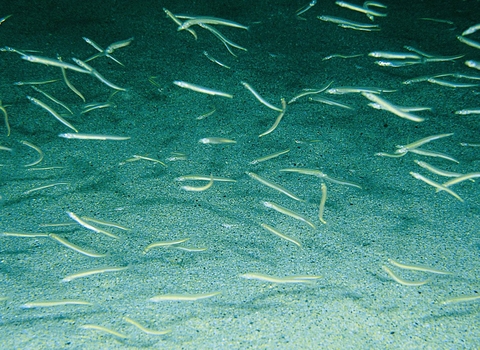
Sand eels ©Paul Naylor www.marinephoto.co.uk
Sand eel
Sand eels are a hugely important part of our marine ecosystem. In fact, the fledgling success of our breeding seabirds entirely depends on them.
Scientific name
Many species, including Ammodytes tobianusWhen to see
September to AprilTop facts
Stats
Length: species vary in size. Lesser sandeel up to 20cm.Common. The lesser sand eel is a a Priority Species under the UK Post-2010 Biodiversity Framework.
